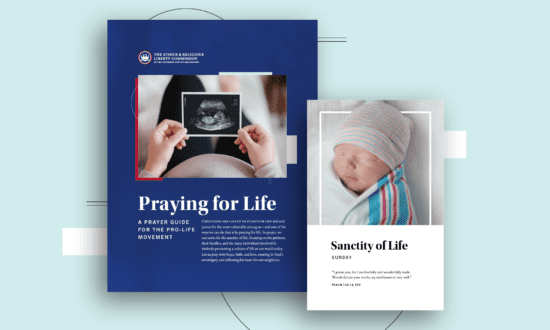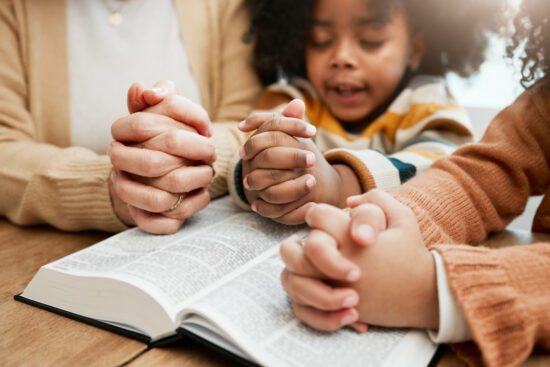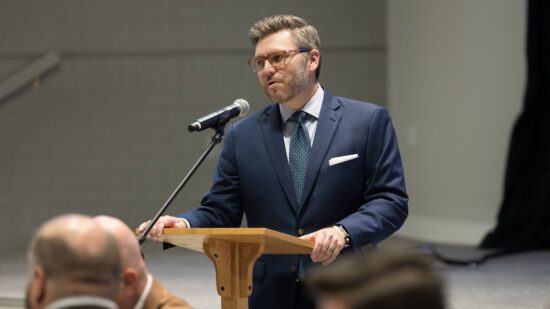Perhaps you can remember an occasion where something was said and you felt a shudder of shame. Such a moment happened for me a couple of years ago, when I had convened a group of conservative evangelical women leaders to talk about various issues affecting the church. The conversation turned to the awful revelations of sexual abuse and misogyny within evangelical churches—sometimes carried out or covered up by those who were respected as champions of theological orthodoxy and morality. One woman in the room said, “I get the feeling that many of our Christian brothers are especially thrown by this because they are shocked by it all; what you need to know is that, while we are angry and sad, we are not shocked.”
And every woman—no matter the age, denomination, or place on the spectrum of church worship “styles”—all nodded their heads along with her. They had all seen spiritual abuse and mistreatment, and they had all seen male leaders not raising the right sorts of questions, at the right time. I felt a sense of sorrow, and then a sense of shame. How could the church not see so many instances of evil carried out, blasphemously, in Jesus’ name?
The danger of looking for solutions in the wrong places
One of the dangers in this unveiling time of sexual abuse is to seek to find a theological or ecclesiological or political or ideological “reason” for abuse in a way that can give the illusion that just adopting the “right” positions will give a safe harbor from such atrocities. When a Hollywood director is caught in an abusive pattern, some evangelical Christians will say, “See, this is where the ideology of sexual revolution leads; ideas have consequences.” And then when a Christian clergyman is discovered in the same sort of abusive behavior, I’ve heard some of my secular friends say that such should not be surprising since that’s where “sexual repression” leads.
When the scope of the abuse crisis in the Roman Catholic Church started coming to light, some Protestants said, “This is what happens when clerical celibacy is mandated,” while some Catholic traditionalists said the abuse was the result of the 1960s or the “looseness” of Vatican II. When the scope of sexual abuse cases in Southern Baptist churches was reported, some said this is what happens when there’s church autonomy without the accountability of bishops. And yet, the problem in the Catholic church is not autonomy or lack of hierarchy, but the reverse.
The problem with such debates is not that they consider how theologies and ideologies can empower abuse—or create structures of cultures in which such abuse can grow. That is certainly true. The problem is that often these debates can give the illusion that the struggle to keep the vulnerable safe from sexual predation is a matter of exchanging one set of propositions for another, or one set of by-laws for another.
Some theologies lead to horrible consequences, yes. And some church structures can lead to heightened vulnerability. But sexual abuse of the vulnerable is demonic—and the devil can use any theology, ideology, or structure. Evildoers can hide behind church hierarchies—high and low—or behind church autonomy. They can hide behind systems where leaders are mandatorily celibate or in systems where the leaders have families with double-digit numbers of children.
The need for reformation and being shaped by the Bible
That said, any revelation of a horror within the church ought to prompt the church to say, “From where did this come? Is what we have been saying or teaching yielding bad fruit?” The church, after all, ought to be always reforming. For many, it took the selling of indulgences for the construction of cathedrals to see that something had been obscured in the gospel of grace. For others, it took seeing people in public scandal pronouncing themselves to be King David to see that “free grace” was being used to prop up the heresy of “Let us sin all the more that grace may abound.”
One of the problems of our current era of evangelicalism is that we often cultivate those who are, in the words of New Testament scholar David Nienhuis, “Bible quoters rather than Bible readers.” And here I am not referring to the often-bemoaned problem of “theologically shallow” Christians, but, quite often, to those who are the most oriented around issues of “theological truth” but know the Bible primarily in terms of contemporary controversies and tribal identities rather than on its own terms, as the narrative that structures their own lives. That can lead to people who know how to marshal Bible verses to argue for or against infant baptism or for or against speaking in tongues, but who don’t have their lives and consciences shaped by the unfolding of the Bible.
In such cases, then, the ideological silos become preeminent over everything and areas of biblical emphasis become exaggerated or eclipsed, depending on how they serve to prop up the arguments. I remember being seated in a church service once next to a man who doggedly argued, in every venue he could find, on his views on the “five points of Calvinism.” When the pastor of the church prayed, “And, Lord, we thank you for our Lord Jesus who is the propitiation for our sins, and not for our sins only but for those of the whole world.” After the “Amen,” this young man whispered to those around him, “What was up with that Arminian prayer?” Well, this was not an “Arminian prayer” (nor was it a “Calvinist prayer”), but a direct, literal quotation of 1 John 2:2. But, because the Arminians with which he argued often quoted 1 John 2:2 while he was quoting John 6 or Ephesians 1, this man had started to think of these passages in ways that left him, really, without 1 John 2:2, except to argue for what he believed it didn’t say.
When it comes to the “gender debates,” much the same thing can happen. Without even being consciously aware of it, “egalitarians” can bristle when Ephesians 5 is read and “complementarians” can do the same with Galatians 3:28, because their first impulse in both cases is to highlight how the other viewpoint might misuse those texts rather than hearing all of it as the whole counsel of God.
It is crucial, then, for those of us to believe that the created realities of sexual differentiation are meant to differ in important ways to see how complementarity means that we need the full gifts and expressions of both men and women—and that in order to do that we must see not only where these realities differ but also where they are the same.
Recognizing the full gifts and expressions of men and women
“There is neither Jew nor Greek, there is neither slave nor free, there is no male and female, for you are all one in Christ Jesus,” the Apostle Paul wrote. “And if you are Christ’s, then you are heirs according to promise” (Gal. 3:28-29). This passage does not mean that gender differentiation is eradicated and irrelevant (such would contradict many other passages, both in the Gospels and in the Epistles), so those argue for “complementarity” are right to note that the passage is about inheritance, not about so-called “gender roles.”
And yet, consider what “inheritance” means. In the first-century context (and in most cultures before it) the inheritance went primarily to the first-born son. A daughter’s inheritance was bound up with her husband’s family, not her father’s. But, in Christ, the heir of everything, every Christian—male and female, Jew and Gentile, rich and poor, every Christian—shares equally in the inheritance that belongs to Jesus. All who walk by the Spirit are “children of God, and if children, then heirs” (Rom. 8:16-17).
And, of course, an “inheritance” in the biblical world is not usually a bank account or a set of abstract financial “assets” in the way we moderns typically think of the term. An inheritance was a way of life, a calling. If one’s father was a farmer, one’s inheritance was usually a plot of land, along with a calling to keep cultivating that land. If one’s father was a fisherman, one’s inheritance would probably be a boat and nets and an area of water in which to fish (which is why it was startling for Peter, James, and John to leave their nets behind when they followed Jesus).
“From the beginning, God made them male and female,” Jesus said (Mark 10:6). This means that any idea of gender as a mere social construct or cultural accretion is wrong. Maleness and femaleness are real, and differ in significant ways. But it’s also true that these differences are all in the context of a corresponding sameness. Not only are both men and women created in the image of God, both are called to govern, cultivate, and conserve the rest of creation (Gen. 1:26-27). Both are redeemed in Christ, and both, if redeemed in him, will reign with him in the new creation (Luke 22:29-30).
Rightly understanding our differences
The differences between men and women are too often thought of in terms of CEO/employee metaphors alien to the biblical text. The relationship in marriage between husband and wife as head and body is an organic analogy, not that of a corporate flow chart. This is not defined by the way of Caesar, which is concerned with the question, “Who is to have the position of preeminence?” Instead, this is defined by the way of Christ, and the question, “Who has the responsibility to see that others are flourishing and protected?”
This organic unity, then, is not about a power struggle over who is to dominate whom, but rather the natural flow of the sort of organic unity one sees when one walks or runs or dances. The movements differ, but are in sync with one another. And in addition to the organic metaphors, the Scripture also employs household metaphors.
The church is the “household of God” (1 Tim. 3:5, 15). A child needs parents, but, more particularly, a child needs a mother and a father. If we speak of them simply as generic caregivers, we lose something of the complementary nature of a mother and a father. At the same time, we can try to quantify what both bring to the task of parenting to the point of caricature. Mothers are distinctly nurturing, yes, but they also have authority. Fathers are authoritative, but if fathers are not also nurturing they are tyrannical. In many ways, we know the distinct callings of mothers and fathers in ways that we can’t always articulate or quantify. In some ways, these are less akin to “roles” than they are to callings—particular vocations toward a common mission.
In this sense, the complementary differences between men and women are similar to the gifts of the Spirit seen within the church (which also employ organic and household analogies). Someone with the gift of evangelism is not a sign that the rest of the church is not called to evangelize; we all are (Matt. 28:19). The one with the gift of evangelism has a special calling to equip the rest of the church to evangelize better. In the same way, we are all called to teach—in some way or other, if only in our personal bearing witness to Christ (Matt. 28:20). The one with the gift of teaching does not monopolize or hoard that calling but is specially equipped to help the rest of the Body to carry out that mission. The differences between men and women are to drive us together—whether in the mission of a marriage or the mission of the church.
Some have rightly identified the awful and unbiblical realities of patriarchal oppression, but sought to answer such with an avoidance of any unique callings of women and men. That is often a right diagnosis but with the wrong solution. At the same time—and perhaps more often in our tribal settings—there is the tendency toward a kind of hyper-complementarianism that reduces everything—including almost every aspect of cultural analysis—to gender in ways more like the mirror image of contemporary gender theorists than like the biblical pattern of creation and redemption. The temptation is always to see one error and to build a hedge around it, just as the religious leaders of Jesus’ day sought to build hedges around Sabbath observance or ritual cleansings to make sure there was no possibility of erring.
The end result of that is, in the most benign of cases, a caricaturing of masculinity and femininity in which men are sometimes seen in ways more like Nimrod than like Jesus, and women are seen in ways that don’t line up at all with the sort of strong, witness-bearing mothers of the faith we see in the Bible. And, in the most malignant of cases, this sort of mentality can lead to churches where women’s voices are not heard, where leadership is, by default, come to be seen as dominating, self-serving, and, in the end, predatory.
C.S. Lewis was right when he warned, “The devil always sends errors into the world in pairs—pairs of opposites. And he always encourages us to spend a lot of time thinking which is the worse. You see why, of course? He relies on your extra dislike of the one error to draw you gradually into the opposite one.” Denying the goodness of distinctions between men and women is one more flight from the boundaries God created for our flourishing—and often, ultimately, leads to men exploiting their power. Downplaying the common mission of men and women, together, leads to a deification of power itself—and, ultimately, leads to men exploiting their power. In both cases, the answer is to be shaped by Christ crucified—and that leads to responsibility—including the responsibility to care for the vulnerable, to protect the integrity and safety of the community from those who would destroy it with their power-mongering, spiritual abuse, and sexual predation, and violence. That means treating one another as mothers and fathers, brothers and sisters (1 Tim. 5:1).
And that means empowering women to serve and lead in every biblically-mandated way. The church needs both spiritual mothers and spiritual fathers. We must all be on watch. We must all be constantly examining not only how we may have wrong theologies, but just as much examining how predatory people can use “right” theologies for awful ends.
Any theology of men and women that is rooted in Scripture must then emphasize that any hint of toleration for the abuse, mistreatment, or trivialization of women is not only at odds with the gospel but in step with the devil. Any structure that covers up predation against the vulnerable—even when (rather, especially when) purporting to do so to protect the “reputation” of Jesus—is not just counterproductive but anti-Christ.
Adam needs Eve. Eve needs Adam. Both need Jesus.










